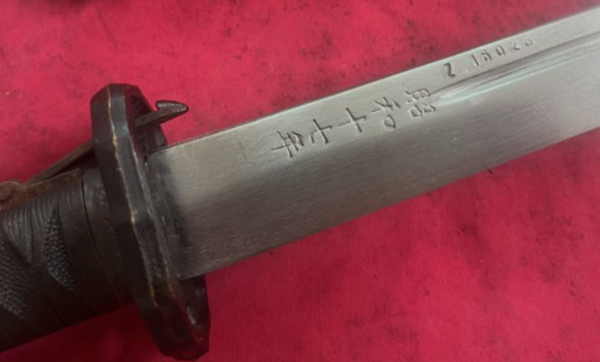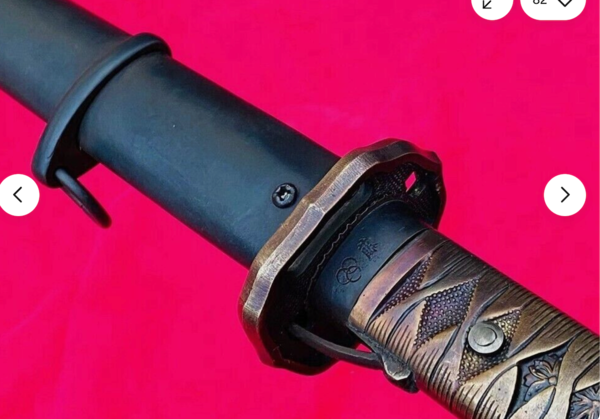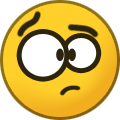
John C
Members-
Posts
2,543 -
Joined
-
Last visited
-
Days Won
16
Content Type
Profiles
Forums
Events
Store
Downloads
Gallery
Everything posted by John C
-
I have a similar flat jingasa with the 5 rays (forgot the name) and tassel. Never looked up the mon, however I believe it's common. John C.
-
Piers: Nice display In re: your jingasa, I read somewhere the light, flat wide-brimmed jingasa were used by tamegashima ashigaru because it kept the rain off of the match cord. Any truth to that or was it just a light and convenient sun shade for marching? John C.
-
-
- 2
-

-

-
@Bruce Pennington Do you need a photo of Murata-to stamps (se and Kokura cannonball)? https://www.ebay.com/itm/205830768967? John C.
-
Another repro from Longquan China. In this case, they used multiple versions of fake numbers and writing. 154 dollars. https://www.ebay.com/itm/267486630604? John C.
-
From the same factory I posted above. This auction is straight from China 159 bucks. https://www.ebay.com/itm/305278626077? John C.
-
Looks like the date is Bunkyu 1 (Feb 1861). You'll have to wait for a mei translation. John C.
-
Type 98 Koshirae w/ Small Size "Shige" Mei on Nakago
John C replied to Klink's topic in Military Swords of Japan
-
Jens: Guten Tag. Here is an auction for a Japanese field manual. This may answer questions about how equipment was supposed to be carried. Of course, everyone who has been in the military knows you carry things they way it works best for you once you leave the parade grounds. https://www.ebay.com/itm/116890492694? John C.
-
Yet another fake being sold as real. 800 USD. 9 people are watching this! https://www.ebay.com/itm/157480984955? John C.
-
Update: 2 days left and up to 306 dollars. Can't wait until someone eventually posts it here. John C.
-
Chris: Just as an aside, the term nyudo is used on swords to describe a monk or one who has joined the priesthood. John C.
-
Here is a google translation for the regs on the left side: Translation 1. The long sword, trumpet, and cavalry equipment (excluding the sabretache) are to be carried by the cavalry. 2. Officers at government offices, schools (excluding the self-funded car school), headquarters, material depots (excluding air corps material depots and maintenance units), military police, and corporals are to carry the Type 32 Model B sword (non-commissioned officers and soldiers of the headquarters non-commissioned officer committee and air corps maintenance units are excluded from this table). 3. Chief mechanics, non-commissioned officers and soldiers of all units, and heavy artillery special duty personnel are to carry the Type 30 bayonet. 4. Non-commissioned officers and soldiers of the balloon corps are to carry the Type 30 and Type 14 weapons. 5. Students of the Army Signal School are to carry the Type 30 bayonet. 6. Students of the Army Aviation School are to carry the Type 30 bayonet. 7. Students of the Army Cadet School are to carry the branch insignia of their assigned branch. (Including acting paymasters, acting medical officers, acting veterinary officers, and acting engineering officers) Acting officers are to carry the officer's sword. 8. Students of the Army Youth School are to carry the Type 30 bayonet. 9. Students of the Army Engineering School are to carry the Type 30 bayonet. 10. Students of the Military Music School are to carry the Type 30 bayonet. 11. The Type 38 cavalry rifle is to be carried in addition to this table by the Chief of Military Police in Kyoto, Osaka, Kobe, and the high-ranking military police chiefs. John C.
-
Update: up to 201 dollars now. John C.
-
Bruce: Just for reference, mine is in similar condition and set-up as the one above. And, happens to be one number later "66". John C.
-
Another one of the 40127 fakes. This one is already up to 151 dollars with 5 days left. Described accurately, however at least two people must think it is real. https://shopgoodwill.com/item/247839701 John C.
-
The shape of the kissaki seems odd to me. Is that a feature of Bizen? John C.
-
So would these have been hand carved from a lump of clay then fired? At the time, I would think these would have been done for the masses. But now they are more expensive than bone or metal? I'm glad you posted it. I would have walked right past it in a shop. John C.
-
Steve: Google app has it as "medical bag". John C. p.s. if you take a screenshot of the original picture and drop it into the googe search bar, it will come up with a translate button on the bottom right. Click on that and it will translate the kanji fairly well (except hand written or unreadable stuff).
-
Increasing Gold Membership numbers?
John C replied to Brian's topic in General Nihonto Related Discussion
I'm sure there is a good reason for not using advertising as a revenue source. But I have seen several sites where membership (gold in this case) is ad free, while visiting is not. Is that an option? John C. -
Andre: Difficult to say from one picture, however it appears at first glance that the fittings are the type found on reproduction swords. We would need more pictures of the blade and tang to have a better assessment. Regards, John C.
-
Western numbers were common, however stamped or painted not chiseled. Maybe Bruce @Bruce Pennington has seen it. John C.
-
Steve: As a general rule, always assume gimei if not papered. But also, with a big name in particular, if papers raise the value substantially why didn't the previous owners get it papered? Or, did they try and it didn't pass? Without a thorough kantei of the blade itself, it's just guesswork. And just my personal thing, I get suspicious quickly of flowery descriptions. He's trying to sell the sword a little too hard. John C. p.s. From marketing 101 - people like to buy; they don't like to be sold.
-
World War II Sword, Maybe?
John C replied to garbage finds's topic in General Nihonto Related Discussion
Jeff: There is a technique for cleaning textiles (in this case silk or possibly cotton) that are fragile. It's one that some restorers use: Put some water in a container with a little mild dish soap - something that is non-detergent but cuts grease. Whisk it or mix it vigorously until you get a lot of bubbles. Using a clean rag, scoop up some of the bubbles - bubbles only, not the water - and gently dab the rag on the sticky spots. The key is to not get too wet and not to rub. John C. -
William: This appears to be a date. Is there anything on the other side of the tang? John C.














